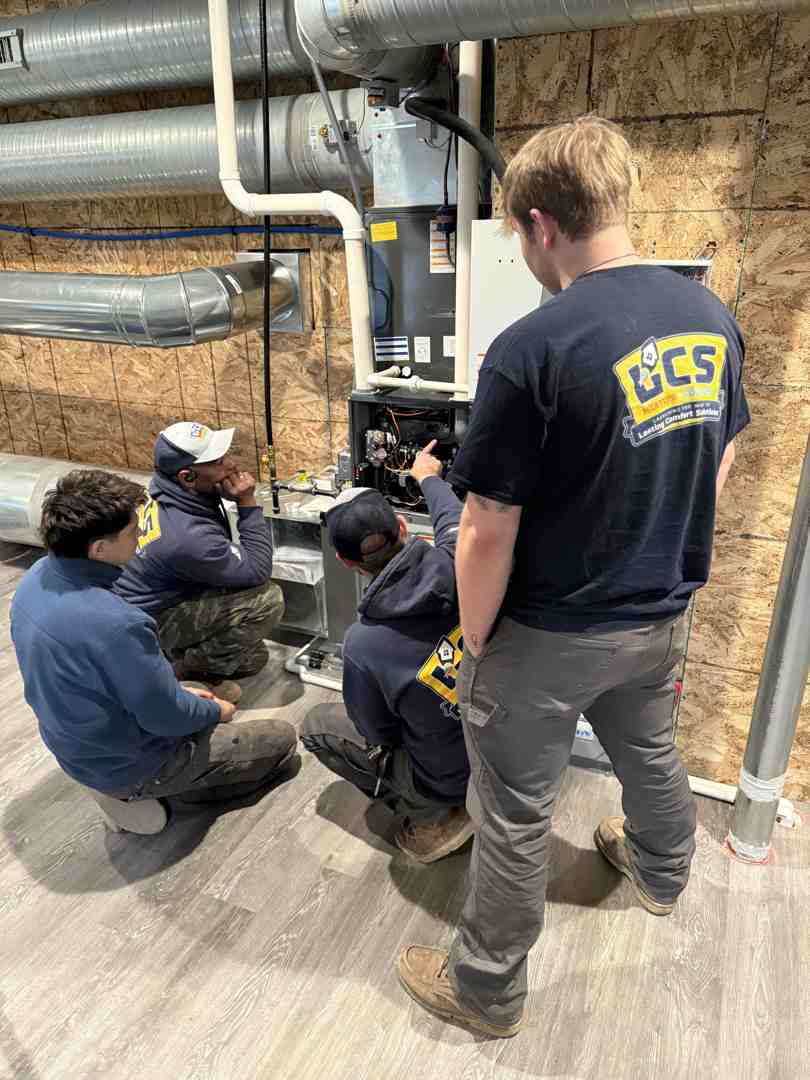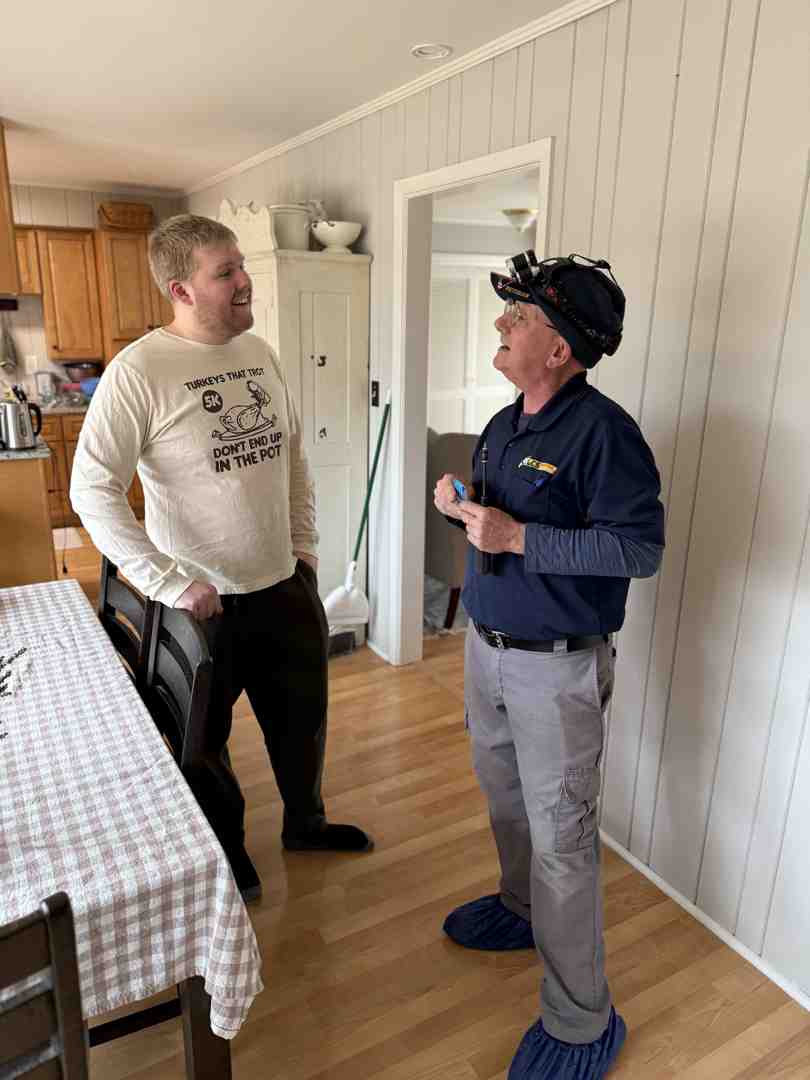The Fresh Air Formula: What You Need to Know About Air Quality
Why Indoor Air Quality Matters More Than You Think
Air quality solutions are essential for protecting your health and comfort. Since indoor air can be 2-5 times more polluted than outdoor air, the right solutions can dramatically improve your family's well-being.
The three main types of air quality solutions are:
- Source Control - Eliminating or reducing pollution sources
- Improved Ventilation - Bringing in fresh outdoor air to dilute pollutants
- Air Cleaning - Using filters and purifiers to remove contaminants
The statistics are sobering. The World Health Organization reports that 92% of the global population breathes polluted air daily, contributing to millions of premature deaths each year.
Your home should be a safe haven, but pollutants from building materials, cleaning products, pet dander, and cooking fumes can cause issues beyond allergies, including reduced cognitive performance and "Sick Building Syndrome."
The good news is that modern air quality solutions can remove up to 99% of harmful particles when properly implemented. From advanced HVAC filtration to whole-home purification systems, today's technology offers powerful ways to create cleaner, healthier indoor environments.
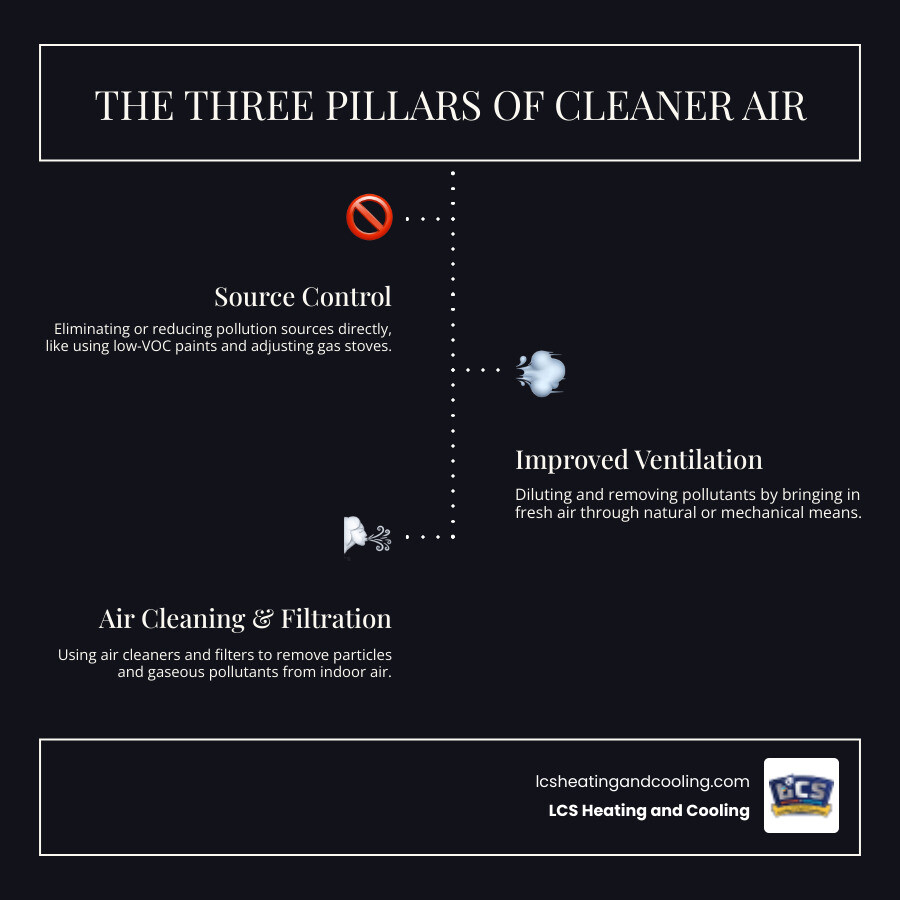
Understanding the Problem: What's Polluting Your Indoor Air?
The air inside your home is often two to five times more polluted than the air outside. These invisible pollutants don't just cause sneezing; they can trigger allergies, lead to respiratory issues, reduce your cognitive performance, and even cause "Sick Building Syndrome"—a general feeling of being unwell at home with no obvious cause.
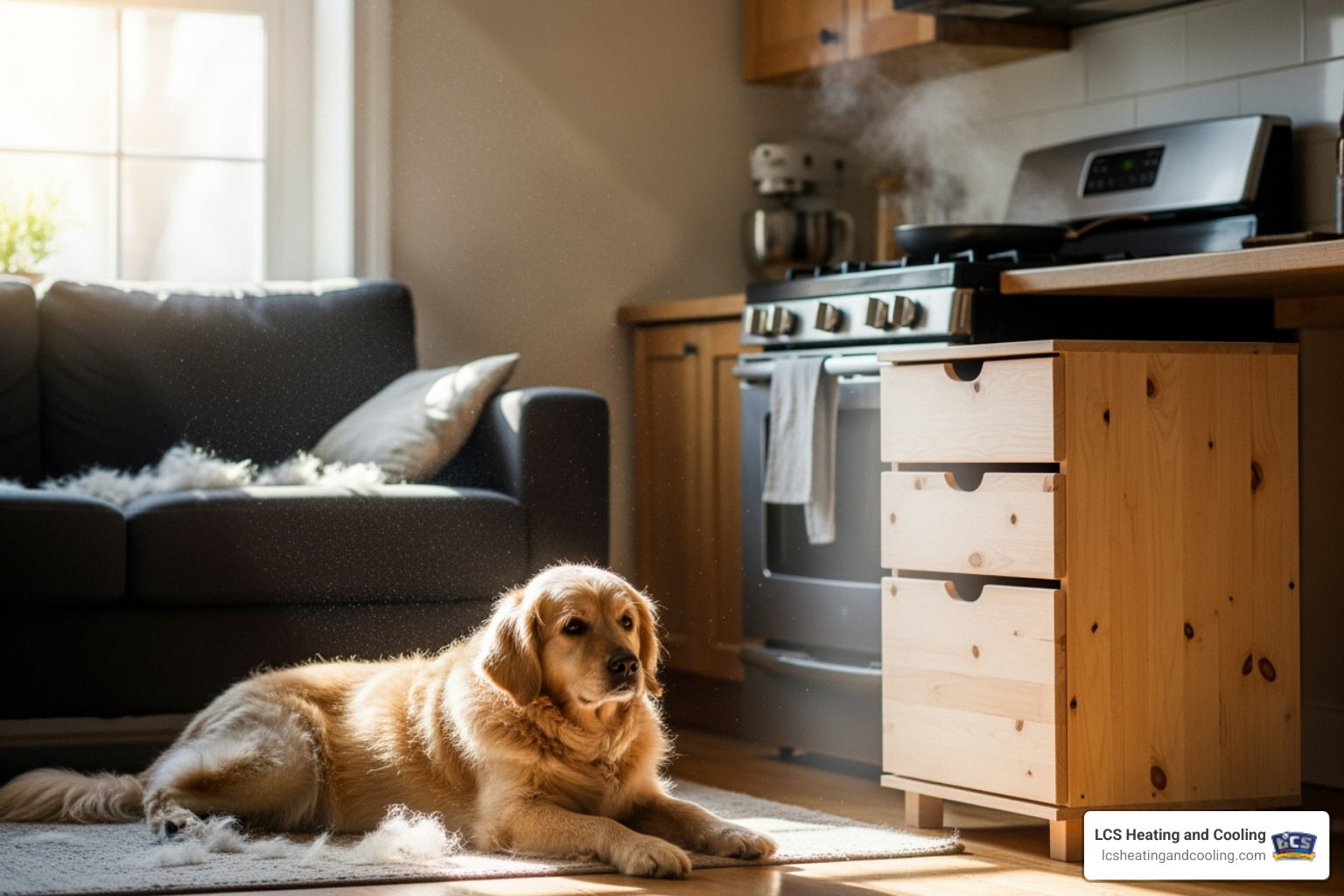
Common Culprits in Your Home
The biggest troublemakers are often everyday items.
- Volatile Organic Compounds (VOCs) are gases released from new furniture, paint, and cleaning products.
- Particulate Matter (PM2.5) includes tiny particles from cooking, candles, or pets that can settle deep in your lungs.
- Biological pollutants like mold, bacteria, and dust mites thrive in damp areas and spread through your HVAC system.
- Combustion pollutants, including dangerous carbon monoxide, can come from gas stoves or fireplaces.
The Urban Factor: How City Air Affects Your Home
Living in Indianapolis and surrounding areas like Carmel and Fishers means dealing with urban air challenges. Traffic emissions and industrial pollutants can sneak into your home through tiny cracks or your HVAC system. While you can't control outdoor air, you can choose the right air quality solutions to protect your indoor environment. Modern technology can remove up to 99% of these pollutants, turning your home back into the safe haven it should be.
The Three Pillars of Cleaner Air: A Strategic Approach
Effective air quality solutions are built on three pillars that work together: Source Control, Ventilation, and Air Cleaning. Source control is the most cost-effective first step, but ventilation and air cleaning are essential for handling remaining pollutants. The key is to customize this three-pronged approach for your home's specific needs.
Pillar 1: Source Control
The best pollutant is one that never enters your air. Source control tackles the problem at its root by identifying and managing pollution culprits. This includes choosing low-VOC paints and materials, ensuring gas stoves are adjusted to reduce emissions, and having serious concerns like asbestos professionally sealed. Simple habits like using exhaust fans when cooking and storing chemicals properly also make a big difference.
Pillar 2: Improving Ventilation
Ventilation dilutes and removes remaining pollutants by replacing stale indoor air with fresh outdoor air.
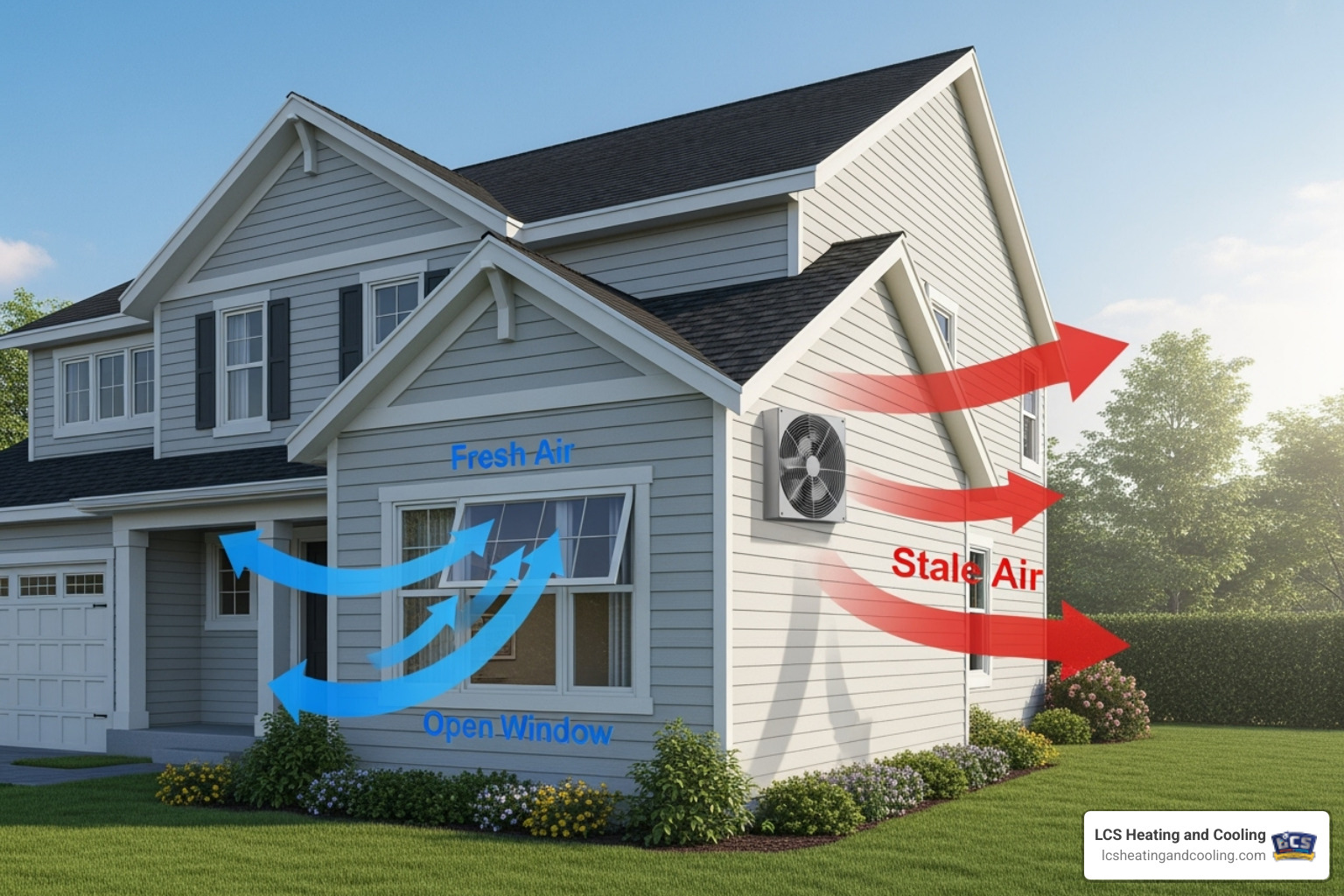
- Natural ventilation means opening windows and doors.
- Mechanical ventilation provides a more consistent solution. Use kitchen and bathroom exhaust fans to remove moisture and odors at the source.
- For the best results, energy-efficient whole-house ventilation systems like HRVs and ERVs provide fresh air without sacrificing energy efficiency.
Pillar 3: Air Cleaning and Filtration
Air cleaning is your final line of defense against airborne contaminants. Air cleaners draw air through systems that capture or neutralize pollutants. Their effectiveness depends on how efficiently they remove pollutants and how much air they process. While most excel at removing particles like dust and pollen, gaseous pollutants like VOCs require specialized filters like activated carbon. MERV ratings help you understand a filter's efficiency—the higher the rating, the smaller the particles it can capture.
Your Guide to Comprehensive Air Quality Solutions
Now that we understand the foundations, let's explore the specific technologies that can transform your home's air. As your trusted HVAC experts serving Indianapolis and surrounding areas, we know that professional-grade air quality solutions integrated with your HVAC system are the most effective. They work quietly behind the scenes, treating every cubic foot of air that circulates through your home.
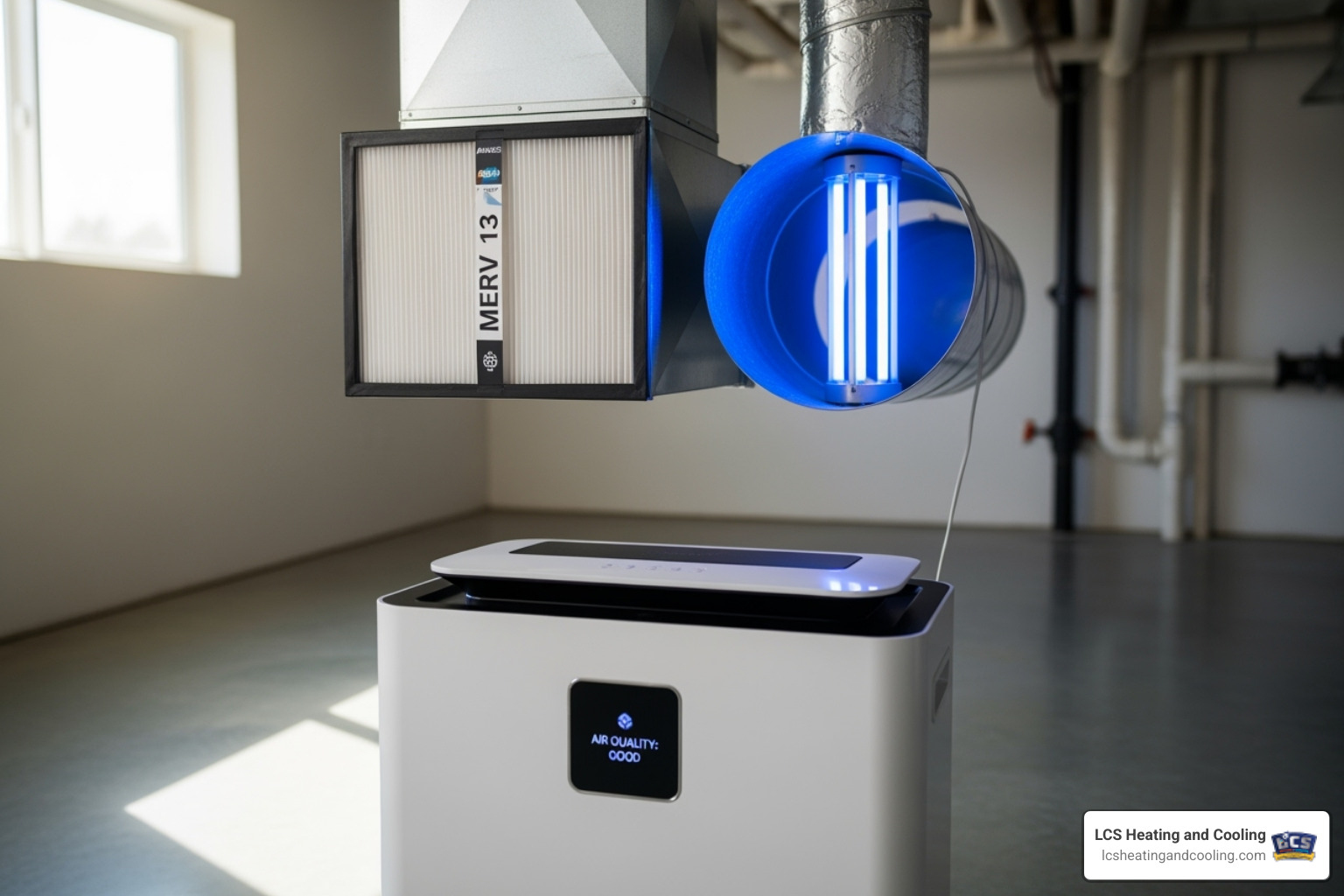
Air Purification Technologies Explained
Each technology has a superpower for tackling specific air quality challenges.
- HEPA-level filtration uses a dense filter to physically trap microscopic particles like dust, pollen, dander, bacteria, and viruses. Our Carrier Infinity air purifiers with MERV 15 filters, for example, capture 95% of particles sized 1.0 to 3.0 microns.
- Activated carbon filtration acts like a chemical sponge, adsorbing gases and odors. It's essential for tackling VOCs, cooking smells, and chemical fumes that other filters miss.
- UV-C germicidal light uses ultraviolet light to damage the DNA of microorganisms like viruses, bacteria, and mold, rendering them harmless. It also keeps HVAC coils clean, improving system efficiency.
- Electronic air cleaners use an electric charge to capture airborne particles. Advanced models like the Carrier Infinity Air Purifier use "Captures & Kills™" technology to not only trap but also inactivate pathogens with over 99% effectiveness.
- Photocatalytic oxidation (PCO) is an advanced technology that combines UV light and a catalyst to break down VOCs and other pollutants into harmless components, effectively changing them at a molecular level.
| Technology | How it Works | What it Removes | Key Benefits | Maintenance |
|---|---|---|---|---|
| HEPA-level Filtration | Dense filter media physically traps microscopic particles. | Dust, pollen, dander, mold spores, bacteria, viruses. | Extremely high particle removal, reducing allergens and irritants. | Annual filter replacement. |
| Activated Carbon | Porous carbon material chemically adsorbs gases and odors. | VOCs, odors (cooking, pets, smoke), chemical fumes. | Eliminates smells and chemical pollutants missed by other filters. | Regular filter replacement. |
| UV-C Germicidal Light | UV light damages the DNA of microorganisms, inactivating them. | Viruses, bacteria, mold spores. | Inactivates airborne pathogens and keeps HVAC coils clean. | Bulb replacement every 1-3 years. |
| Electronic Air Cleaners | Uses an electric charge to trap particles. Advanced models also inactivate pathogens. | Fine dust, smoke, dander, pollen, bacteria, viruses. | High efficiency for microscopic particles; can inactivate pathogens. | Cleaning collector plates or replacing media filters. |
| Photocatalytic Oxidation (PCO) | Combines UV light and a catalyst to break down pollutants. | VOCs, odors, chemical pollutants. | Neutralizes chemicals and odors instead of just trapping them. | UV bulb replacement and catalyst cleaning. |
Choosing the Right Air Quality Solutions for Your Space
Every home is different. We help you choose the right solution by considering:
- Primary pollutants: If allergies are the issue, HEPA-level filtration is key. If odors are the problem, activated carbon or PCO is better.
- Coverage: Whole-home solutions integrated with your HVAC system are more effective and consistent than portable units.
- Maintenance: We ensure you understand the simple annual tasks required for your system.
Professional installation is crucial to ensure your system is properly sized and integrated for optimal, quiet performance. We ensure proper airflow and seamless operation that delivers the comprehensive air cleaning your family deserves.
The Critical Role of Your HVAC System in Air Quality
Your HVAC system acts as the lungs of your home, circulating air through every room. This central role makes it a powerful tool for improving air quality. While a standard furnace filter's main job is to protect the equipment, not purify the air you breathe, the right upgrades can turn your system into your most effective ally for creating cleaner, healthier air.
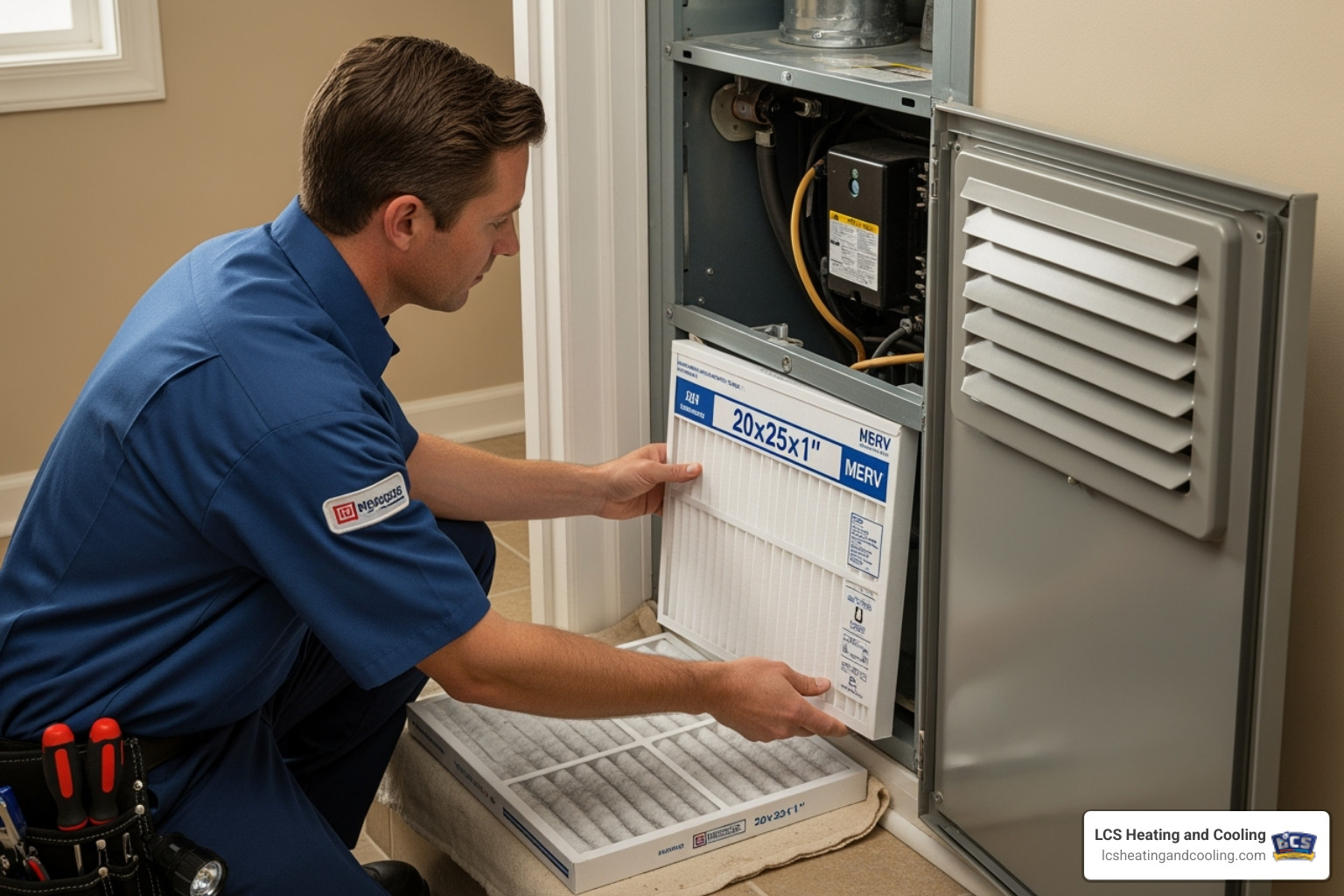
Upgrading Your Filtration
The most impactful first step is upgrading your air filter. This is all about MERV ratings.MERV (Minimum Efficiency Reporting Value) rates a filter's ability to capture particles on a scale of 1-20. Basic MERV 1-4 filters only catch large debris. Upgrading to MERV 10 to MERV 15 filters makes a huge difference, capturing smaller particles like pollen, mold spores, and even some bacteria.
However, it's crucial to balance filtration with airflow. A filter that's too restrictive can strain your system and increase energy bills. We assess your specific HVAC system to recommend the highest MERV rating it can handle safely and efficiently. For compatible systems, HEPA-level filtration offers the highest level of particle removal.
Integrating Advanced Air Quality Solutions
Beyond filters, your HVAC system can house sophisticated air quality solutions that treat all the air in your home.
- Whole-house air purifiers, installed directly into your ductwork, provide consistent purification that portable units can't match.
- Electronic air cleaners are incredibly effective at capturing microscopic particles and some advanced models can even inactivate bacteria and viruses.
- UV lamp installation near the indoor coil is another great addition. These UV-C lights prevent mold and bacteria from growing on the coil—a common issue in humid Indiana summers—which keeps your air cleaner and your system more efficient.
Professional installation is critical to ensure these systems are sized and positioned correctly for quiet, effective operation. Our team knows how to configure these air quality solutions for maximum effectiveness in Indiana homes. You can learn more at our Indianapolis HVAC services page.
Frequently Asked Questions about Air Quality
We've helped countless families in the Indianapolis area improve their air quality, and a few questions come up often. Here are some straightforward answers.
How often should I test my home's air quality?
Most homeowners don't need routine professional testing; your nose and your family's health are often the best indicators. However, testing is valuable in specific situations:
- After major renovations or water damage.
- If you're experiencing persistent health symptoms like unexplained allergies or headaches that are worse indoors.
- Before or after moving into a new home, especially an older one.
A professional assessment measures particulates, VOCs, and mold, providing a clear roadmap for the right air quality solutions.
Are houseplants an effective air quality solution?
While we love houseplants, they are not the air-purifying powerhouses many believe. The EPA's research shows there's no evidence that a reasonable number of houseplants can remove significant quantities of indoor air pollutants. In fact, overwatering can contribute to mold growth. For real results, rely on proven technologies that can handle your home's air volume. You can find more comprehensive strategies at How to improve indoor air quality.
What is a MERV rating and why does it matter?
MERV stands for Minimum Efficiency Reporting Value, a 1-20 scale that rates how well a filter catches particles. Higher numbers mean the filter catches smaller particles.
- MERV 1-4: Basic protection for your HVAC equipment.
- MERV 5-8: Captures pollen and mold spores.
- MERV 9-12: Handles pet dander and lead dust.
- MERV 13-16: Captures bacteria and many virus carriers.
The key is to balance filtration power with your system's airflow needs. A filter that's too restrictive can strain your HVAC system. We always evaluate your specific system before recommending the highest appropriate MERV rating to ensure both clean air and optimal system performance.
Breathe Easier with Expert Guidance
Creating a healthier home doesn't have to be overwhelming. By understanding the three key strategies—Source Control, Improved Ventilation, and Air Cleaning—you can take a holistic approach to breathing cleaner air. Each step, from switching cleaning products to upgrading your HVAC filter or adding a whole-home purifier, builds on the last to create layers of protection.
At LCS Heating and Cooling, we've been helping families throughout Indianapolis, Carmel, Fishers, and the surrounding areas create healthier homes for years. We know every situation is unique, whether you're dealing with pet allergies, asthma, or general stuffiness.
Our professional assessment is designed to understand your specific needs and recommend air quality solutions that will make a real difference. With our 7-Star Concierge Service, we provide clear communication and expert installation, ensuring you're completely comfortable with your new system.
The investment in cleaner air pays dividends in better sleep, fewer sick days, and improved comfort. Your family deserves to breathe easy.
Ready to take the next step toward healthier indoor air? Contact our Indianapolis HVAC experts to find your ideal air quality solution. Let's work together to create the clean, comfortable home your family deserves.
